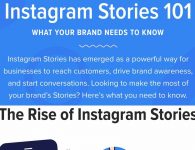

Millennials and Generation Z approach the world and the marketplace in very different ways. The new paradigm is influenced by peer reviews, driven by the desire for personalized products and service, and the refusal to delay gratification.
Getty
Are today’s companies ready for the next disruption? With the rise of the smartphone, fast fashion, and ride-sharing and the decline of industry stalwarts like GE, IBM, and Coca-Cola, conventional wisdom says that technology is propelling the disruption that is roiling the markets. Here’s a switch. Business expert Suman Sarkar, a partner with Three S Consulting, says this belief is dead wrong. Sarkar contends that “disruption is, in fact, driven by changing customer needs – and that only those companies that truly understand their customers can succeed.”
If you’re a founder, in the C-Suite, or deep into the customer experience on the work front, Sarkar has a warning. “If you’re not focused on your customers, they will leave as soon as they find a viable alternative, and their departure is only a matter of time.”
Sarkar, who has advised leaders at dozens of Fortune 500 companies asserts that too many executives concentrate on short-term performance. This often means mergers and acquisitions, incremental innovation, marketing, and global expansion – which, over the long-term, only widen the gulf between the company and its customers.
According to Sarkar, “These ill-fated approaches are built on an outdated understanding of the market – a time when baby boomers were swayed by advertising, when developing nations wanted whatever was “American,” and when consumerism was the rule of the day.” In his new book debuting in September, Customer-Driven Disruption, Sarkar shared that millennials and Generation Z approach the world and the marketplace in very different ways – influenced by peer reviews, driven by the desire for personalized products and service, and unwilling to delay gratification. No wonder companies everywhere are often struggling to keep pace with these very real, out-sized expectations.
Customer Satisfaction And Understanding Your Customer Is Paramount To Driving Success in Today’s Complex Markets
Getty
Sarkar details five strategies that any company can adapt in their own push to connect with, and capitalize on, customer needs. See how many of them your company is currently executing or what you shoudl be adding to your project list. They are:
Win With Current Customers Before Chasing After New Ones – Sarkar advises, “New customers are expensive to acquire, and typically produce less revenue than current, satisfied customers. Yet, when faced with declining revenues, most companies focus on finding new customers. Advising against loyalty and customer retention programs. Sarkar encourages companies to tap into the existing customer base to buy more. It comes down to identifying customers by segments (not the way most companies currently do); determining what services are valued by each segment; creating a range of services based on these differing needs; and pricing the new service appropriately.
Personalization Is Not A Luxury – This is an radical about face philosophy. Mass-produced products aren’t on anyone’s wish list anymore. Today, customers want personalized products and services at reasonable prices. To make personalization affordable, leaders must think completely differently about offerings, create flexible operations – like distributed manufacturing and separate supply chains – and reduce waste. Sarkar shared, “Whoever masters the art of producing affordable, personalized products will enjoy a significant competitive advantage in the future,.”
Customers Won’t Wait – Most companies spend an inordinate amount of time designing products or services. Indeed, the whole cycle can take so long that by the time the product launches, customer needs have changed or more nimble competitors have captured the market. Sarkar encourages firms in all industries to learn how to quickly develop products or solutions that address customers’ changing needs. This means examining and speeding up the supply chain, reducing sales promotion, and produce what customers really want to buy.
Good Enough Is No Longer Good Enough – Admit it. This something we all do. Now that the public judges products based on reviews and peer recommendations, quality is more critical than ever before. This means offering a level of performance customers can’t resist and the competition can’t beat. The trick is how to achieve quality without prohibitive cost by thinking outside the box. Sarkar inverts the process and argues that quality control shouldn’t happen at the end of the manufacturing process, but all along the route – including across the supply chain.
Disregard Strategies 1 Through 4 – Reread that and absorb it. Sarkar espouses “What makes you great today won’t necessarily keep you great tomorrow, unless you and your company’s strategies evolve with your customers.” That applies even to these first four strategies. To prevail, Shakar recommends successful companies need to constantly reinvent and re-imagine using 360 triangulation and partner workshops, empowering employee teams, and encouraging attention to detail citing great corporate reinvention examples like Disney and Haier, the Chinese manufacturer, as two success stories.
So, how did your company do? Remember, the negative aspect of disruption can often be “a death sentence to a business, but it doesn’t have to be,” according to Shakar. Instead, the positive is you can use change to focus on what’s important—your customers. Time to start that list.
read more at http://www.forbes.com/entrepreneurs/ by NJ Goldston, Contributor
Business









